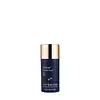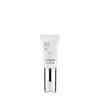What's inside
What's inside
 Key Ingredients
Key Ingredients

 Benefits
Benefits

 Concerns
Concerns

 Ingredients Side-by-side
Ingredients Side-by-side

Water
Skin ConditioningCaprylyl Methicone
Skin ConditioningGlycerin
HumectantJojoba Esters
EmollientNiacinamide
SmoothingPEG-16 Macadamia Glycerides
EmollientCetearyl Alcohol
EmollientGlyceryl Stearate
EmollientCeteareth-20
CleansingPEG-100 Stearate
Caprylic/Capric Triglyceride
MaskingAlcohol Denat.
AntimicrobialPalmitoyl Tripeptide-38
Skin ConditioningCaffeine
Skin ConditioningS-Mu-Conotoxin Cniiic Acetate
Skin ConditioningCopper Lysinate/Prolinate
Skin ConditioningHydrolyzed Lupine Protein
Skin ConditioningTerminalia Ferdinandiana Fruit Extract
AntioxidantMethylglucoside Phosphate
Skin ConditioningSodium Hyaluronate
HumectantSaccharomyces Cerevisiae Extract
Skin ConditioningArginine
MaskingGlycine
BufferingHydroxypropyl Cyclodextrin
MaskingCarbomer
Emulsion StabilisingHexylene Glycol
EmulsifyingCitric Acid
BufferingSodium Hydroxide
BufferingEthylhexylglycerin
Skin ConditioningCaprylyl Glycol
EmollientPhenoxyethanol
PreservativeWater, Caprylyl Methicone, Glycerin, Jojoba Esters, Niacinamide, PEG-16 Macadamia Glycerides, Cetearyl Alcohol, Glyceryl Stearate, Ceteareth-20, PEG-100 Stearate, Caprylic/Capric Triglyceride, Alcohol Denat., Palmitoyl Tripeptide-38, Caffeine, S-Mu-Conotoxin Cniiic Acetate, Copper Lysinate/Prolinate, Hydrolyzed Lupine Protein, Terminalia Ferdinandiana Fruit Extract, Methylglucoside Phosphate, Sodium Hyaluronate, Saccharomyces Cerevisiae Extract, Arginine, Glycine, Hydroxypropyl Cyclodextrin, Carbomer, Hexylene Glycol, Citric Acid, Sodium Hydroxide, Ethylhexylglycerin, Caprylyl Glycol, Phenoxyethanol
Water
Skin ConditioningGlycerin
HumectantCoffea Robusta Seed Extract
Skin ConditioningSodium Hyaluronate
HumectantRhizobian Gum
Ascophyllum Nodosum Extract
Skin ConditioningChrysanthellum Indicum Extract
Skin ConditioningAsparagopsis Armata Extract
Skin ProtectingGlycosaminoglycans
EmollientSilica
AbrasiveSilica Silylate
EmollientHydroxyproline
Skin ConditioningTocopherol
AntioxidantMagnesium Ascorbyl Phosphate
AntioxidantAscorbyl Palmitate
AntioxidantDisodium Rutinyl Disulfate
AntioxidantSorbitol
HumectantLecithin
EmollientGlyceryl Stearate
EmollientButylene Glycol
HumectantGlyceryl Oleate
EmollientCarbomer
Emulsion StabilisingCaprylyl Glycol
Emollient1,2-Hexanediol
Skin ConditioningPropylene Glycol
HumectantAlcohol Denat.
AntimicrobialSodium Hydroxide
BufferingSorbic Acid
PreservativeTrisodium EDTA
Citric Acid
BufferingBenzyl Alcohol
PerfumingTriethanolamine
BufferingPotassium Sorbate
PreservativePhenoxyethanol
PreservativeChlorphenesin
AntimicrobialWater, Glycerin, Coffea Robusta Seed Extract, Sodium Hyaluronate, Rhizobian Gum, Ascophyllum Nodosum Extract, Chrysanthellum Indicum Extract, Asparagopsis Armata Extract, Glycosaminoglycans, Silica, Silica Silylate, Hydroxyproline, Tocopherol, Magnesium Ascorbyl Phosphate, Ascorbyl Palmitate, Disodium Rutinyl Disulfate, Sorbitol, Lecithin, Glyceryl Stearate, Butylene Glycol, Glyceryl Oleate, Carbomer, Caprylyl Glycol, 1,2-Hexanediol, Propylene Glycol, Alcohol Denat., Sodium Hydroxide, Sorbic Acid, Trisodium EDTA, Citric Acid, Benzyl Alcohol, Triethanolamine, Potassium Sorbate, Phenoxyethanol, Chlorphenesin
Ingredients Explained
These ingredients are found in both products.
Ingredients higher up in an ingredient list are typically present in a larger amount.
Alcohol Denat. is an alcohol with a denaturant property. It is created by mixing ethanol with other additives.
This ingredient gets a bad rep because it is irritating and drying - mostly due to its astringent property. Astringents draw out natural oils in tissue, constricting pores and leaving your skin dried out.
However, alcohol denat. is not all that bad.
Due to its low molecular weight, alcohol denat. tends to evaporate quickly. One study on pig skin found half of applied alcohol evaporated in 10 seconds and less than 3% stayed on skin.
This also helps other ingredients become better absorbed upon application.
Studies are conflicted about whether this ingredient causes skin dehydration. One study from 2005 found adding emollients to propanol-based sanitizer decreased skin dryness and irritation. Another study found irritation only occurs if your skin is already damaged.
Small amounts of alcohol are generally tolerated by oily skin or people who live in humid environments.
The rule of thumb is if this alcohol is near the end of an ingredients list, it will probably not affect your skin much.
Also...
This ingredient has antimicrobial and solvent properties.
The antimicrobial property helps preserve products and increase their shelf life. As a solvent, it helps dissolve other ingredients.
Other types of astringent alcohols include:
Learn more about Alcohol Denat.Caprylyl Glycol is a humectant and emollient, meaning it attracts and preserves moisture.
It is a common ingredient in many products, especially those designed to hydrate skin. The primary benefits are retaining moisture, skin softening, and promoting a healthy skin barrier.
Though Caprylyl Glycol is an alcohol derived from fatty acids, it is not the kind that can dry out skin.
This ingredient is also used as a preservative to extend the life of products. It has slight antimicrobial properties.
Learn more about Caprylyl GlycolCarbomer is a polymer of acrylic acid. Its main role is to create a gel consistency.
A high amount of carbomer can cause pilling or balling up of products. Don't worry, most products contain 1% or less of carbomer.
Citric Acid is an alpha hydroxy acid (AHA) naturally found in citrus fruits like oranges, lemons, and limes.
Like other AHAs, citric acid can exfoliate skin by breaking down the bonds that hold dead skin cells together. This helps reveal smoother and brighter skin underneath.
However, this exfoliating effect only happens at high concentrations (20%) which can be hard to find in cosmetic products.
Due to this, citric acid is usually included in small amounts as a pH adjuster. This helps keep products slightly more acidic and compatible with skin's natural pH.
In skincare formulas, citric acid can:
While it can provide some skin benefits, research shows lactic acid and glycolic acid are generally more effective and less irritating exfoliants.
Most citric acid used in skincare today is made by fermenting sugars (usually from molasses). This synthetic version is identical to the natural citrus form but easier to stabilize and use in formulations.
Read more about some other popular AHA's here:
Learn more about Citric AcidGlycerin is already naturally found in your skin. It helps moisturize and protect your skin.
A study from 2016 found glycerin to be more effective as a humectant than AHAs and hyaluronic acid.
As a humectant, it helps the skin stay hydrated by pulling moisture to your skin. The low molecular weight of glycerin allows it to pull moisture into the deeper layers of your skin.
Hydrated skin improves your skin barrier; Your skin barrier helps protect against irritants and bacteria.
Glycerin has also been found to have antimicrobial and antiviral properties. Due to these properties, glycerin is often used in wound and burn treatments.
In cosmetics, glycerin is usually derived from plants such as soybean or palm. However, it can also be sourced from animals, such as tallow or animal fat.
This ingredient is organic, colorless, odorless, and non-toxic.
Glycerin is the name for this ingredient in American English. British English uses Glycerol/Glycerine.
Learn more about GlycerinGlyceryl Stearate is a mix of glycerin and stearic acid.
It is used to stabilize the mixing of water and oil ingredients. By preventing these ingredients from separating, it can help elongate shelf life. It can also help thicken the product's texture.
As an emollient, it helps soften skin and supports barrier-replenishing ingredients.
In cosmetics, Glyceryl Stearate is often made from vegetable oils or synthetically produced.
This ingredient may not be fungal-acne safe
Fun fact: The human body also creates Glyceryl Stearate naturally.
Learn more about Glyceryl StearatePhenoxyethanol is a preservative that has germicide, antimicrobial, and aromatic properties. Studies show that phenoxyethanol can prevent microbial growth. By itself, it has a scent that is similar to that of a rose.
It's often used in formulations along with Caprylyl Glycol to preserve the shelf life of products.
Sodium Hyaluronate is hyaluronic acid's salt form. It is commonly derived from the sodium salt of hyaluronic acid.
Like hyaluronic acid, it is great at holding water and acts as a humectant. This makes it a great skin hydrating ingredient.
Sodium Hyaluronate is naturally occurring in our bodies and is mostly found in eye fluid and joints.
These are some other common types of Hyaluronic Acid:
Learn more about Sodium HyaluronateSodium Hydroxide is also known as lye or caustic soda. It is used to adjust the pH of products; many ingredients require a specific pH to be effective.
In small amounts, sodium hydroxide is considered safe to use. However, large amounts may cause chemical burns due to its high alkaline.
Your skin has a natural pH and acid mantle. This acid mantle helps prevent harmful bacteria from breaking through. The acid mantle also helps keep your skin hydrated.
"Alkaline" refers to a high pH level. A low pH level would be considered acidic.
Learn more about Sodium HydroxideWater. It's the most common cosmetic ingredient of all. You'll usually see it at the top of ingredient lists, meaning that it makes up the largest part of the product.
So why is it so popular? Water most often acts as a solvent - this means that it helps dissolve other ingredients into the formulation.
You'll also recognize water as that liquid we all need to stay alive. If you see this, drink a glass of water. Stay hydrated!
Learn more about Water